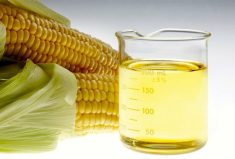Crop protection companies selling glyphosate have two years to make minor changes to parts of their product labels, as the 43-year-old herbicide formally clears Health Canada’s re-evaluation process.
The re-evaluation, launched in late 2009 in a standard federal practice for registered pesticides in Canada, has ruled that products containing glyphosate — when used following the new label directions — are “not a concern to human health and the environment.”
The federal health department’s final re-evaluation decision, released Friday, sticks close to the decision it first proposed and released for public comment in April 2015.
Read Also

Senft to step down as CEO of Seeds Canada
Barry Senft, the founding CEO of the five-year-old Seeds Canada organization is stepping down as of January 2026.
The proposed new label updates — which marketers of commercial products containing glyphosate must include on labels “no later than 24 months” from Friday — are meant to “help provide additional protection to humans and the environment.”
The new labels must include a statement that people’s re-entry into glyphosate-sprayed farm fields should be restricted to 12 hours after application.
A statement must also be added to labels that the product is to be applied “only when the potential to spread to areas of human activity, such as houses, cottages, schools and recreational areas, is minimal.”
The new labels must also include “instructions for spray buffer zones to protect non-targeted areas and aquatic habitats from unintended exposure,” plus “precautionary statements to reduce the potential for runoff of glyphosate into aquatic areas.”
Health Canada’s “overall finding” from its re-examination of glyphosate found the product is “not genotoxic and is unlikely to pose a human cancer risk.”
Dietary exposure, via food or drinking water, associated with the use of glyphosate is “not expected to pose a risk of concern to human health,” the department added.
Occupational and residential risks linked with use of glyphosate are also “not of concern, provided that updated label instructions are followed.”
Spray buffer zones, however, “are necessary to mitigate potential risks to non-target species” such as vegetation near treated areas, aquatic invertebrates and fish, due to spray drift.
Used according to revised label directions, glyphosate products “are not expected to pose risks of concern to the environment,” the department added.
All currently registered glyphosate uses, Health Canada said, “have value for weed control in agriculture and non-agricultural land management.”
Glyphosate, which crop chemical and seed firm Monsanto first brought to market under the Roundup brand in 1974, has run up against new scrutiny from a human health angle in the past couple of years.
The International Agency for Research on Cancer (IARC), an arm of the World Health Organization, announced in a 2015 report that it would move glyphosate into its Group 2A — “probably carcinogenic to humans.”
Health Canada’s re-evaluation, while not related to the IARC report, described the agency’s reclassification of glyphosate as “a hazard classification and not a health risk assessment.
“This means that the level of human exposure, which determines the actual risk, was not taken into account by IARC.” — AGCanada.com Network















